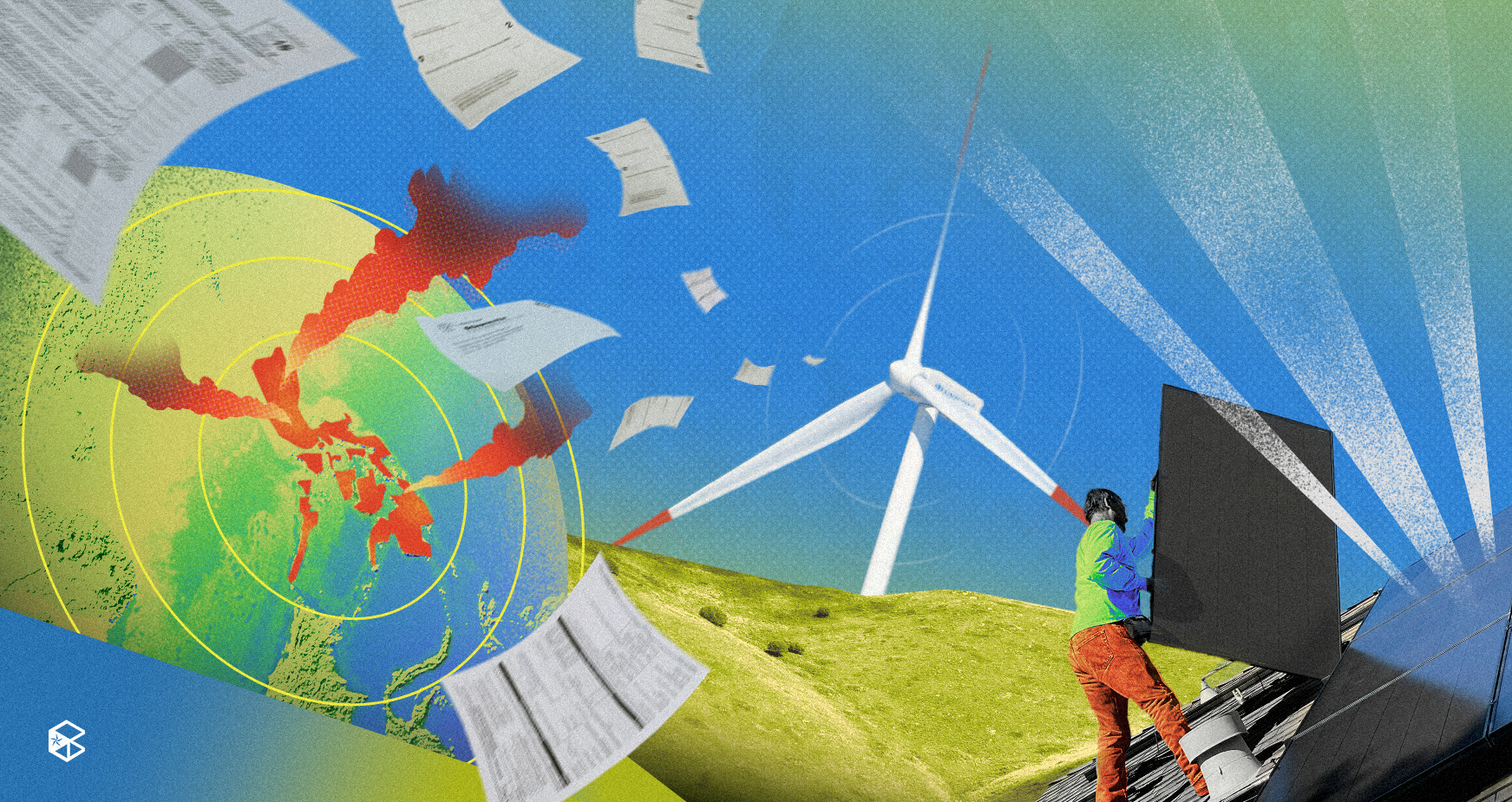“Our Power, Our Planet” is the theme of Earth Day 2025, advocating the goal of tripling clean energy’s share in the global energy mix by 2030. However, despite the Philippines being rich in resources, the transition to renewable energy remains slow.
According to Ember, 22% of the Philippines’ electricity comes from renewable energy, which is 17% below the global average. Data also shows that the share of renewable energy in the country alarmingly decreased over the years, with 25.4% and 28.4% in 2015 and 2012, respectively. Moreover, as of 2023, fossil fuels remain as primary source of electricity with a share of a whopping 79%.
Home to a vast and abundant sources of renewable energy sources that other countries can only dream of having, the Department of Energy found that the country has a renewable energy potential of 261,100 megawatts across all geothermal, wind, hydropower, ocean, and biomass energy sources and a potential of 5 kilowatt-hours per square meter per day for solar energy.
Moreover, according to International Renewable Energy Agency (IRENA) program officer for renewable energy project development and finance, Mr. Arjub Guha, the Philippines is ripe for renewable energy sharing, “The demand is there at the community, at the public level. The demand for renewables is there because of its job creation potential, the cost-saving potential.” Therefore, what exactly is holding the country back?
Stuck in a rut
The largest hurdle for the Philippines’ renewable energy transition lies in the country’s own bureaucracy, with investors stuck in complex paperwork and permits rather than running their facilities. Developers are required to secure numerous permits and approvals from different bureaus, divisions, and agencies, which further lengthens when these bodies require clarifications regarding the applications of renewable energy developers.
To address these concerns, the government established the Energy Virtual One-Stop Shop (EVOSS) to alleviate the complex permitting process through the online portal. However, the platform only digitized the process and did not reduce the number of approvals needed for renewable energy development.
Another key player in the development and transition to renewable energy generation is the National Grid Corporation of the Philippines (NGCP), which operates, maintains, and develops the country’s power grid. In 2025, the NGCP had only completed 75 out of 258 planned projects, creating a bottleneck in the implementation of renewable energy policies and the development of the national grid.
Beyond the myriad of permits needed and red tape, there is also the financial burden of establishing renewable energy facilities, as it demands significant capital up front. The hefty price tag of renewable energy is ultimately borne by end-users, which means that the average Filipino pays higher monthly utility bills, according to the WWF Philippines’ Initial Policy Report.
A steep price to pay
In addition, the most formidable obstacle in the renewable energy transition of the Philippines is the lack of social support and capital towards the adoption of clean sources. In a study by Ateneo de Manila University, 82% of households are interested in acquiring solar panels but only 20% have firm intentions due to the lack of access to reliable installation services with concerns over quality of materials, maintenance, and provider credibility.
The core appeal was renewable energy’s long-term savings, but the steep upfront cost of around P100,000 for a home setup deters most of the public. Filipinos were also found to be more hesitant to renewable energy sources that are less familiar compared to wind and solar sources, such as biogas and ramp pumps.
Clearly, there is a need for widespread education efforts and grassroots campaigns to address the gap in the familiarity with renewable energy sources. Non-governmental organizations (NGOs) such as Greenpeace Philippines have advocated for the transition to renewable energy in the country, while WWF Philippines has engaged energy stakeholders, the government, and communities towards energy security and sustainability.
More than words
Earth Day is a reminder of what can and must be done for the planet’s cleaner and brighter future. However, despite the global nature of this event, the responsibility should be accepted at the local level by taking tangible action to ensure that the goals pledged are more than empty promises.
Despite the barriers that prevent the Philippines’ transition to renewable energy, the Philippines should utilize its abundant resources, take action by actively addressing the issues at hand, and implement policies that support the path towards clean energy. The fight for renewable energy is not just about power plants, it's about empowering communities, protecting the environment, and reimagining what progress looks like. Thus, it is high time that the Philippines takes part in this fight for a green future.


